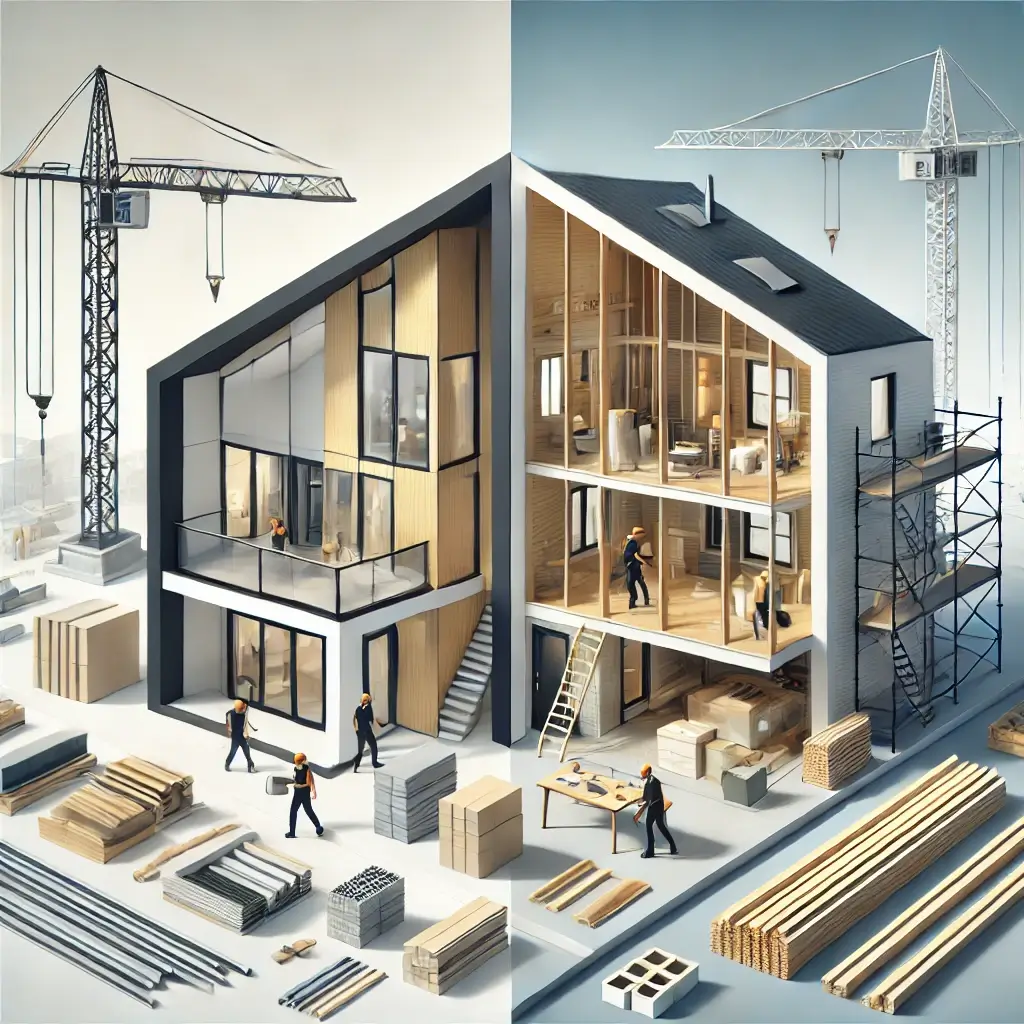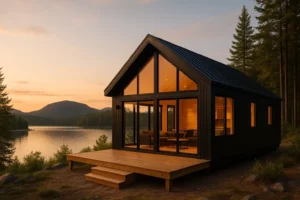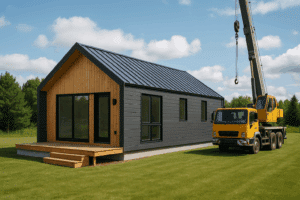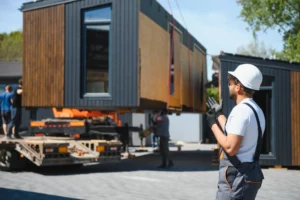When it comes to building a home, the choice between prefabricated or site-built depends on many factors, from budget to time available to the level of customization desired.
Prefabricated housing offers reduced construction times and controlled quality, while on-site construction allows for greater flexibility and is better suited to specific needs and particular terrains.
In this article, we review the pros and cons of each option to help you make the best choice based on your project and priorities.
Advantages of prefabricated houses
- Quick construction
Prefabricated homes are factory-built, significantly reducing construction times. Unlike on-site construction, they are unaffected by weather conditions, allowing for rapid delivery and assembly in just a few days once on site. - Factory controlled quality
At the factory, each manufacturing step follows strict quality control standards. Materials and techniques are standardized, ensuring precise finishes and a more consistent final product. This minimizes errors and improves the durability of the house. - More predictable costs
Thanks to factory production, costs are generally better controlled and more predictable than on-site construction. Prefabricated homes offer clear and accurate quotes, reducing the risk of budget overruns and providing financial security for future owners.
These advantages make prefabricated homes a practical and reliable option for those looking for quick construction without surprises.
Find your dream home now! Explore our platform to discover a wide selection of prefabricated home models and manufacturers, all gathered in one place to make your life easier.
Comparison of costs, time, management and personal involvement
To help you better understand the differences between a prefabricated home and on-site construction, here is a comparison table of the main criteria: costs, timescales, project management and the level of personal involvement required.
This table will allow you to quickly assess which option might best suit your project and your priorities.
| Criteria | Prefabricated House | On-site Construction |
| Costs | Costs are often more predictable and controlled, with clear quotes from the start. | More flexible costs, but with an increased risk of overruns depending on choices and unforeseen events. |
| Time limit | Shorter and consistent construction times (less dependent on weather). | Delays are often longer, depending on weather conditions and coordination of those involved. |
| Project Management | Simplified management: the majority of the process is handled by the manufacturer at the factory. | More complex management, requiring the coordination of several contractors and stages on the site. |
| Personal Involvement | Less involvement required, especially focused on the choice of models and finishes. | Strong involvement required: regular monitoring, frequent decision-making and adaptation to unforeseen events. |
Kit house
Some prefabricated house projects, including kit houses, actually require more active project management. In these cases, although the walls, roof, and other components are pre-assembled in the factory, the owner often has to manage several aspects on the ground, much like in on-site construction.
With a kit home, the owner is often responsible for:
- Coordination of trades : It is necessary to organize the intervention of various craftsmen and contractors – such as electricians, plumbers and foundation installers – to complete the steps that the kit does not directly cover.
- Assembly supervision In some cases, homeowners choose to participate in the assembly process, whether it's laying walls, adjusting the roof, or even finalizing certain exterior finishes. This requires careful management to ensure that each step is properly followed.
- Managing the unexpected : Although the main structure is factory-fabricated, on-site adjustments may be necessary, especially if the terrain presents particular constraints or if minor modifications are required during assembly.
These “hybrid” projects offer a flexibility and one potentially reduced cost, but require an investment in time and organization, bringing the experience closer to that of on-site construction.
Environmental and ecological impact
Prefabricated House
Factory-built prefabricated homes significantly reduce material waste. Production processes are optimized to use only the necessary amount of wood, steel, and other materials, thereby reducing the environmental footprint. Additionally, prefabrication plants are often designed to minimize energy loss, and some manufacturers prioritize eco-friendly and certified materials. Reducing the need for construction crews to travel back and forth also limits travel-related CO₂ emissions.
On-site Construction
On-site construction often generates more waste, as each step is carried out manually, sometimes with surpluses or inaccurate quantities of materials. However, it offers the opportunity to choose local and ecological materials and to incorporate sustainable construction techniques adapted to the particularities of the terrain. For example, natural insulation or the use of solar panels can be easily integrated, allowing for greater energy efficiency if the overall project is well thought out.
In summary, prefabricated housing stands out for its resource efficiency and reduced impact thanks to centralized factory production. However, well-planned on-site construction can also be environmentally friendly by offering greater freedom to incorporate local materials and solutions, thus limiting the overall ecological footprint.
Conclusion
The choice between a prefabricated home and on-site construction depends primarily on your priorities and expectations. Prefabricated homes offer speed, cost predictability, and environmental efficiency thanks to their factory-built construction, making them ideal for those looking for a turnkey solution with a reduced impact.
Conversely, on-site construction allows for total customization and flexibility in material choices, well-suited to complex terrain or bespoke projects, but requires more management and time.
Ultimately, each option has its strengths: if you prioritize speed and cost control, prefabrication is a great option. If you want to customize every aspect of your future home and are willing to invest more time, on-site construction might be for you.
If you opt for prefabricated, our platform helps you explore the best models and manufacturers to turn your project into reality.




